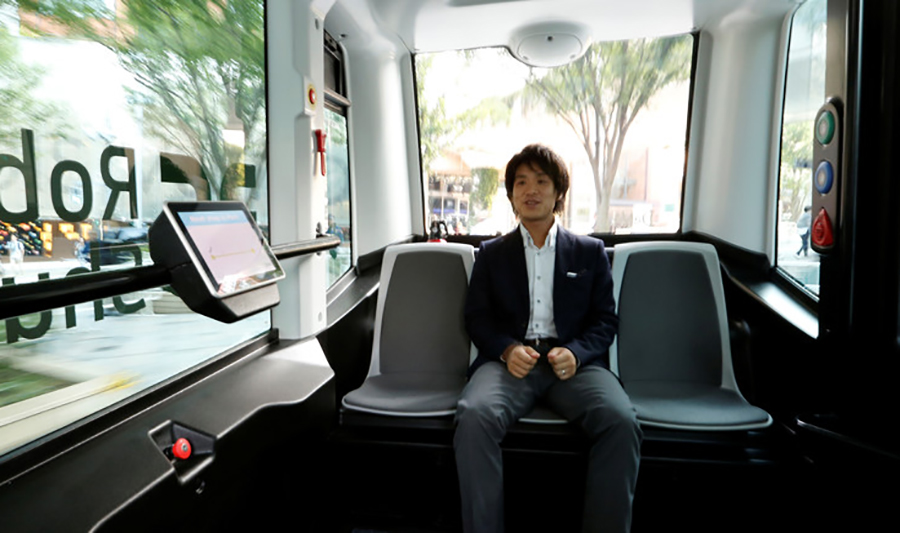
Robohub.org
By 2030, will traffic jams be a thing of the past?

Imagine a future where self-driving cars, trains and buses are all seamlessly connected through an app, where traffic jams are a thing of the past and redundant car parks have been turned into green spaces. This could be the world we live in by 2030, says Cathis Elmsäter-Svärd, Chairwoman of Drive Sweden and a member of the Global Future Council on Mobility, in this interview.
Why should we be thinking about the future of mobility?
All over the world, cities are growing. Urban dwellers typically live, produce, consume and socialize in different neighbourhoods. One of the biggest factors in determining whether we actively enjoy everyday life in a city, or merely have to live there because that’s where the work is, is how much time we spend in traffic jams or standing at bus stops.
The quality of urban mobility is also integral to many other issues we care about: health, because of emissions and accidents; economic growth, through minimizing the time lost in getting workers and products to where they need to be; and inequality – does everyone have the opportunity to move around, or only those who can drive themselves?
How different might urban mobility look by 2030?
By then, instead of owning and driving our own cars, we may routinely be calling up self-driving cars via a sharing-economy platform whenever we need one. They’ll pick us up, drop us at our destination, and pick up someone else, controlled by a smart traffic management system. It’s the concept of “mobility as a service” – a function of automation, digitalization and the shared economy.
But that should be only one part of how mobility has changed by 2030. I envisage that we will have fully automated transport systems where various forms of transport – self-driving cars, trains and buses, cycling, walking – are seamlessly integrated by technology.
We’ll move goods differently, as well as people – perhaps we’ll have small robots making last-mile deliveries, or sophisticated networks of parcel drop-off points, for people to have their shopping delivered to a convenient location where they can collect at their leisure.
All of this should make urban transport work more efficiently, giving us fewer vehicles on the roads, cleaner air and less noise pollution. We’ll need fewer car parks, and they could become green areas or other facilities, making cities even more liveable and likeable.

What would a seamlessly integrated, automated transport system look like?
Imagine an app that gives you, in real time, information about door-to-door options for your journey: say, walking time and directions to the nearest city bike; or where the nearest self-driving car is, and the anticipated journey time given current traffic conditions; when the next bus or train is due; or combinations of these options, sorted by price or time or environmental impact. And you can use the app to summon a car, unlock the bike, or buy your train ticket.
What are the potential roadblocks in realizing this vision?
People will naturally have fears related to the technology. Some will have privacy concerns about an online system always knowing where you are, where you’re going and where you’ve been. Others will worry about cybersecurity – will automated vehicles be secure against hacking?
Political leaders will also need to raise their hands and be willing to be at the forefront of developing these new solutions to mobility. Much of this future vision remains theoretical, and people are often afraid to be the first movers – they want to learn from the mistakes of others.
What should governments be doing?
We need to speed up progress on regulations – technology in autonomous vehicles is progressing more quickly than debates on how insurance should work, and who should bear responsibility for accidents. City governments also tend to budget year-by-year, so they need to find more creative ways of unlocking the necessary investment in new infrastructure.
Each city also faces local challenges depending on their circumstances. The easiest situation is when you’re building a new area in a city, or a whole new city, as you can think about mobility solutions at the same time as you plan new housing. But most cities have to work out how to adapt their existing mass transport systems, or urban environments that evolved to be about cars rather than walking.
Are there examples today of cities leading the way?
Lots are trying, but transport is a very conservative area. What you tend to see now are cities focusing on progress in one particular area – for example, Copenhagen has cycling high on the agenda, while Oslo is putting more attention into electric cars, and so on.
The organisation I chair, Drive Sweden, is bringing together stakeholders from all sectors in the country – government, industry, academia – to address the challenges in moving towards seamlessly automated transport systems for the country’s cities. We will next year designate areas in Stockholm and Gothenburg to have tests in real environments with all kinds of solutions based on digitalization and automation, creating a policy lab which we hope will be of international interest.
We need to recognize that this is much more than a transport issue. We should identify the implications for every sector – environment, trade, health – and look for the win-wins.
tags: Automotive, interview, Person, Robot Car




